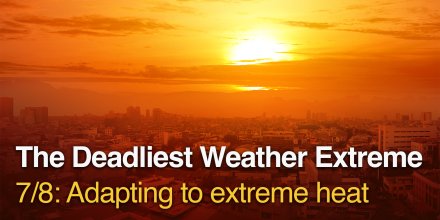
Webinar: Climate Data Tools for Resilient Urban Planning
This second webinar in the series presents digital tools that turn climate data into actionable strategies for urban resilience.

This second webinar in the series presents digital tools that turn climate data into actionable strategies for urban resilience.

Rising heat risks demand better planning, stronger warning systems, and targeted adaptation strategies.
|
|
|||||||||
|---|---|---|---|---|---|---|---|---|---|
|
Icon
|

|

|

|

|

|

|

|

|
|
|
Temperature (°F)
|
|||||||||
|
Temperature felt (°F)
|
0° |
-3° |
0° |
-4° |
-7° |
-10° |
-10° |
-13° |
|
|
Wind direction
|
NNW |
NNW |
NNW |
NW |
NW |
NW |
NW |
NW |
|
|
Wind speed (mph)
|
NNW
7-21
7-21
|
NNW
9-24
9-24
|
NNW
19-42
19-42
|
NW
43-84
43-84
|
NW
47-85
47-85
|
NW
39-76
39-76
|
NW
26-55
26-55
|
NW
25-51
25-51
|
|
|
Precipitation (in/3h)
|
-
0%
-
|
-
0%
-
|
-
0%
-
|
-
0%
-
|
-
0%
-
|
-
0%
-
|
-
0%
-
|
-
0%
-
|
|
|
Precipitation probability
|
0%
|
0%
|
0%
|
0%
|
0%
|
0%
|
0%
|
0%
|
|
|
Precipitation hourly
|
|||||||||
|
Precipitation hourly
|
No precipitation expected |
||||||||
|
rainSPOT
Precipitation distribution within 20 km
|
|
||||||||
At night and for the afternoon clear skies prevail. In the morning a few clouds are expected. It is a sunny day. Temperatures peaking at 27 °F. The UV-Index climbs up to 9, don't forget to use sunscreen when spending the day outside. Overnight into Sunday a gentle breeze is expected (8 to 12 mph). In the morning winds reach gale force speeds, breaking off twigs from trees (39 to 47 mph). In the afternoon strong gale force winds causing structural damage can occur (47 to 55 mph). From time to time gusts could reach up to 91 mph. Winds blowing overnight from North and by day from Northwest. The weather forecast for 26. 93°S 68. 6°W for Sunday is expected to be very accurate.
Pressure: 1018 hPa
Timezone: GMT-04 (UTC -04:00h)
High wind speeds expected for 26.93°S 68.6°W. More Weather Maps
The animation shows the wind conditions of the storm at 200m above ground, which corresponds well with expected gusts at the surface. Choose other time steps to see the forecast of the storm.
The real-time satellite image combines visible light during daytime with infrared radiation during nighttime. At night, the image is not dark as infrared radiation can detect temperature differences. Unfortunately, low clouds and fog are difficult to distinguish from ground temperatures and thus can be almost invisible during the night. Meteosat satellite images for Europe are updated in real-time every 5 minutes. GOES-16/GOES-17 (North & South America) and Himawari (Asia) images update every 10 minutes.
Precipitation is estimated from radar and satellites. Precipitation estimates from satellites are less accurate at night than during daytime.
© 2025 meteoblue, NOAA Satellites GOES-16 and EUMETSAT. Lightning data provided by nowcast.
The location marker is placed on 26.93°S 68.6°W. Orange crosses indicate lightning. Data provided by nowcast.de (available in USA, Europe, Australia). Drizzle or light snow fall might be invisible for the radar. Precipitation intensity is colour coded, ranging from turquoise to red.

This second webinar in the series presents digital tools that turn climate data into actionable strategies for urban resilience.

Rising heat risks demand better planning, stronger warning systems, and targeted adaptation strategies.
 Cerro Vallecito
Cerro Vallecito 
 Macizo Tres Cruces
Macizo Tres Cruces 
 Nevado Tres Cruces
Nevado Tres Cruces 
 Tambería
Tambería 
 Paso de San Francisco
Paso de San Francisco 
 Portezuelo de San Buenaventura
Portezuelo de San Buenaventura 
 Cordillera de San Buenaventura
Cordillera de San Buenaventura 
 Cerro San Buenaventura
Cerro San Buenaventura 
 Portezuelo de Robledo
Portezuelo de Robledo 
 Morro Rasquido
Morro Rasquido 
 Cerro Puntiagudo
Cerro Puntiagudo 
 Cerro Peinado
Cerro Peinado 
Advertising is essential to maintain our free website with unique detail and accuracy.
Please whitelist www.meteoblue.com on your ad blocker or consider buying one of our products:
Already have a subscription?
Then please login.